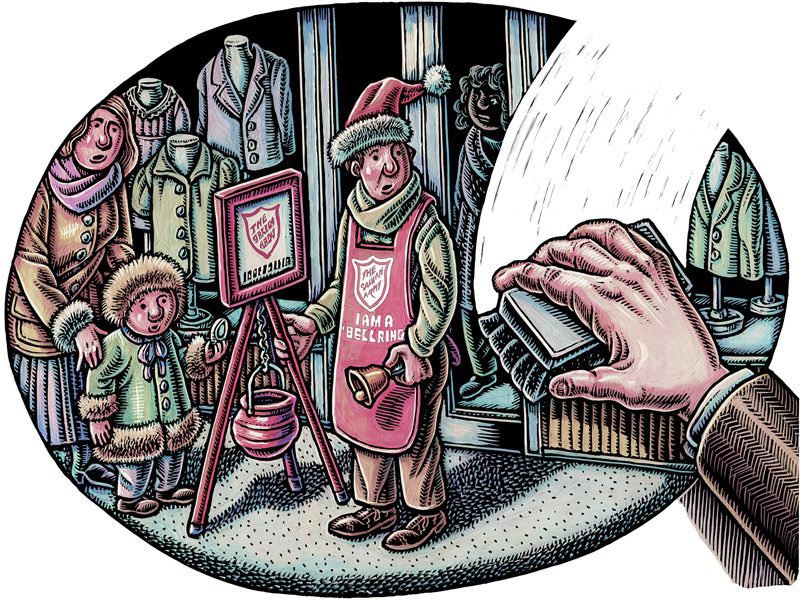BY ROBERT DOCTER –
Images stimulate thought and feeling.
And now, here it is the first Sunday after the first full moon after the vernal equinox — the day we call Easter. In early Rome, it was a name applied to a rabbit bedecked pagan holiday celebrating fertility and the rites of spring. Early Christians adopted it for their most sacred holy day — in much the same way William Booth rewrote popular bar room ballads to communicate the message of saving Grace. Today, the belief surrounding the principal event of Easter — the crucifixion and resurrection of Jesus Christ — is an in-or-out choice for Christians.
If we feel any involvement with the events surrounding Easter — if we have even a casual awareness of its place in the history of civilization — if we read and relate to the content of the narrative, the images stimulate pressing, powerful, and painful thoughts and feelings. They force themselves on us as the stuff of high drama.
The characters engage in dynamic, world-shaking confrontations of right and wrong, of good and evil, of new and old, of power and impotence, of sacrifice and selfishness. As those characters make their ways through that week, imposed events test loyalty. Values become vulnerable. Physical and moral challenges measure courage. Narrow choices demand spontaneity. Fear limits action to fight or flight.
Survival serves as the watchword of the day — for all — except for one man, a solitary figure from a small town in the upper Galilee called Nazareth. He is the protagonist — the focus of the action — the center of images from which spiral choices that impact us 2,000 springtimes later.
Thoughts assemble beliefs. So, what do you believe him to be? That’s the primary choice. Is he Messiah, the Son of God — or simply an inspiring and revolutionary rabbi called Jesus expressing a point of view for his time and place? Is his message for humanity the continuing voice of God, articulating a Creator’s will for his creation — or only profound philosophy? Is he a Father’s sacrifice, offered to establish a redeeming access for all to a heavenly Father — or a misguided, back-woods teacher’s misperception of the power and will of the establishment? We cannot escape that choice. We cannot flee from its confrontation. We cannot run from that responsibility.
Feelings trigger behavior. What are your feelings about those final few days? For some, it is antipathy — feelings against him and his message. He was stupid, they say. He should never have confronted the powerful religious establishment or the politics of Rome. He should never have claimed to be God’s Son. That was going too far. There is anger and hostility there.
For some, the feeling is simply apathy — no feeling. Apathy is love’s opposite. His words are foreign to them. His message distant. Many ignore him completely as only an historical artifact. Some enjoy being around people who have established a working belief system about him but have no feelings about him themselves. Often, they delight in the social experience of “church,” but have developed only superficial and untested casual beliefs about the center of its worship. Their interest is shallow. They say: “How much longer is he going to preach?” Sadly, there seems to be some considerable apathy in the pews of Christendom.
For some, there is much sympathy for him. They feel sad for him — for what he had to go through, for his humiliation and loss of life. “Wow,” they say — “what an awful way to go.” They are thankful for his willingness to sacrifice himself on their behalf. If they knew his phone number or email address they might even give him a call or write him a note expressing their sympathy. They have a distant connection with him — like an old-time transatlantic phone call with much static and uncertainty of sound.
And then there are those who empathize with him They feel with him. As the crown of thorns is pressed into his scalp and brow, they feel the sharp points piercing flesh and scraping bone. As the nails are pounded into his hands and feet, they feel the excruciating agony as his own weight tears muscle and flesh even more. As the hours pass and breathing becomes more difficult — for suffocation is the cause of death by crucifixion — they sense the denial of oxygen and fight the panic that ensues — almost welcoming that final spear in the side.
The images of Easter challenge the depth of our beliefs and require us to confront our thoughts and feelings about the events of those few days — and then choose.
I have. What about you?










